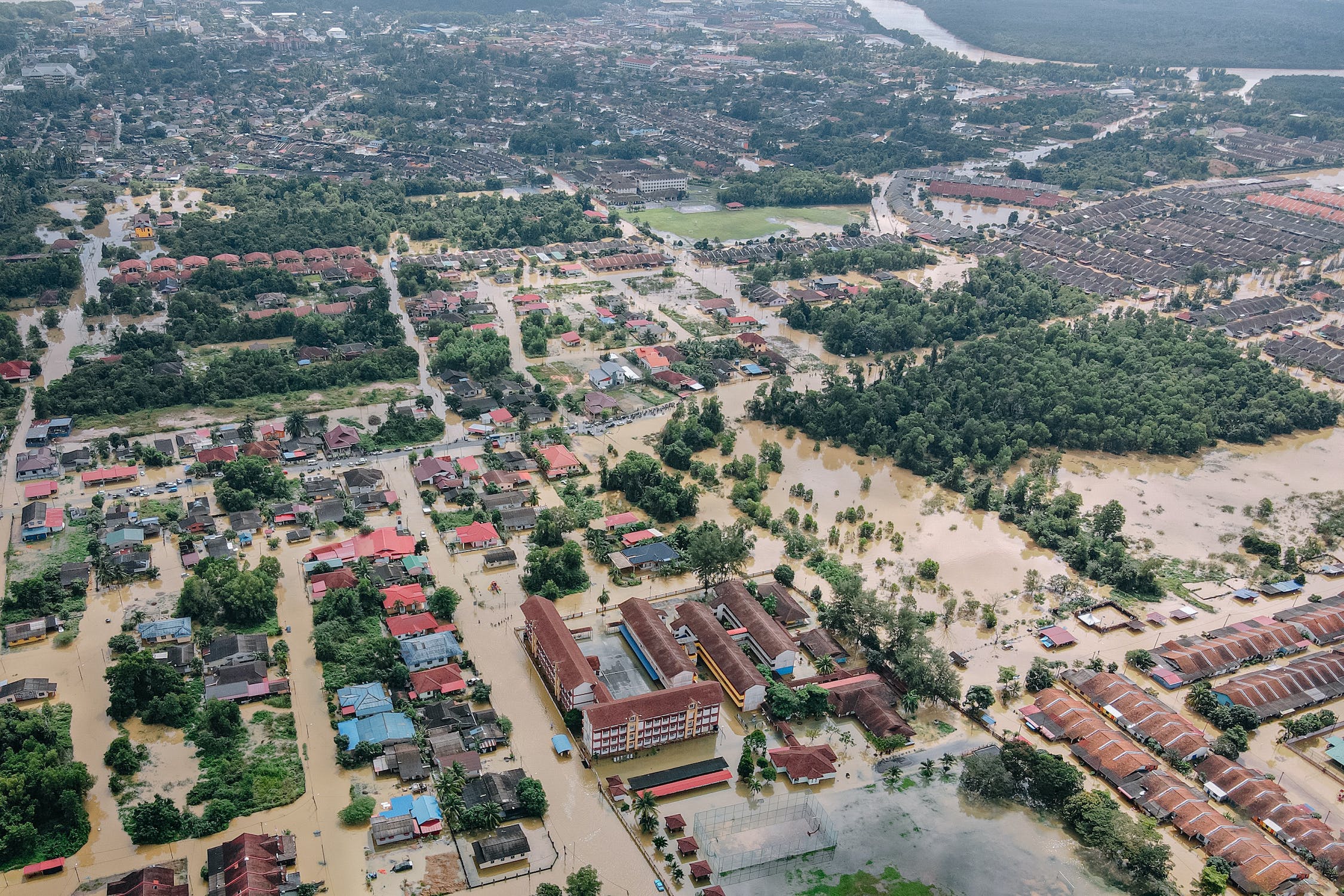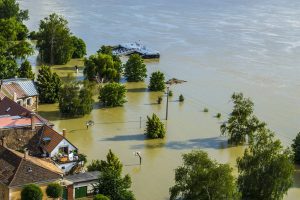“Rebuild with Confidence: 5 Steps to Renovating Your Home After a Flood Disaster”
Introduction
Renovating your home after a flood disaster can be a daunting task. It is important to take the necessary steps to ensure that your home is safe and secure. This article will provide you with five steps to help you get started on the process of renovating your home after a flood disaster. These steps include assessing the damage, creating a plan, finding the right professionals, obtaining the necessary permits, and finally, beginning the renovation process. By following these steps, you can ensure that your home is restored to its pre-flood condition and that you are able to move back in as soon as possible.
Step-by-Step Guide to Assessing the Damage and Making a Plan for Home Renovation After a Flood
1. Assess the Damage: The first step in any home renovation project is to assess the damage. After a flood, it is important to take a thorough look at the entire property to determine the extent of the damage. Look for signs of water damage, such as discoloration, warping, and mold. Take note of any structural damage, such as cracks in the walls or foundation.
2. Make a Plan: Once the damage has been assessed, it is time to make a plan for the renovation. Start by making a list of all the repairs that need to be done. This list should include both structural and cosmetic repairs. Make sure to prioritize the repairs that need to be done first.
3. Get Estimates: Once the list of repairs is complete, it is time to get estimates from contractors. Make sure to get multiple estimates from different contractors to ensure that you are getting the best deal.
4. Secure Financing: Depending on the extent of the repairs, you may need to secure financing for the project. Look into different financing options, such as home equity loans or personal loans.
5. Hire a Contractor: Once you have secured financing, it is time to hire a contractor. Make sure to do your research and find a reputable contractor who is experienced in flood damage repair.
6. Begin Repairs: Once the contractor has been hired, it is time to begin the repairs. Make sure to stay in communication with the contractor throughout the process to ensure that the repairs are being done correctly.
7. Finalize Repairs: Once the repairs are complete, it is time to finalize the project. Make sure to inspect the work to ensure that it meets your standards.
8. Enjoy Your Home: After all the hard work, it is time to enjoy your newly renovated home. Take the time to appreciate all the hard work that went into making your home safe and comfortable again.
How to Find the Right Contractor for Home Renovation After a Flood
When a home has been damaged by a flood, it is important to find the right contractor to complete the necessary renovations. The right contractor will be able to assess the damage, provide an accurate estimate of the cost of repairs, and complete the work in a timely and efficient manner. Here are some tips for finding the right contractor for home renovation after a flood.
1. Research contractors in the area: Start by researching local contractors who specialize in home renovation after a flood. Look for contractors who have experience in the type of work that needs to be done and who have a good reputation in the community. Ask for references from previous clients and read online reviews to get an idea of the quality of work they provide.
2. Get multiple estimates: Once you have identified a few potential contractors, get estimates from each of them. Make sure to get detailed estimates that include the cost of materials, labor, and any other associated costs. Compare the estimates to determine which contractor is offering the best value for the work that needs to be done.
3. Ask questions: Before hiring a contractor, make sure to ask questions about their experience, qualifications, and the timeline for completing the work. Ask for proof of insurance and make sure that the contractor is licensed and bonded.
4. Check references: Ask for references from previous clients and contact them to get an idea of the contractor’s work ethic and quality of work.
By following these tips, you can find the right contractor for home renovation after a flood. Make sure to take your time and do your research to ensure that you are hiring a reliable and experienced contractor who can complete the work in a timely and efficient manner.
Tips for Choosing the Best Materials for Home Renovation After a Flood
1. Consider Durability: When selecting materials for home renovation after a flood, it is important to consider the durability of the materials. Choose materials that are designed to withstand water damage and are resistant to mold and mildew.
2. Choose Waterproof Materials: When selecting materials for home renovation after a flood, it is important to choose materials that are waterproof. This will help to prevent further water damage and ensure that the materials will last longer.
3. Consider Cost: When selecting materials for home renovation after a flood, it is important to consider the cost of the materials. Choose materials that are cost-effective and will not break the bank.
4. Consider Maintenance: When selecting materials for home renovation after a flood, it is important to consider the maintenance requirements of the materials. Choose materials that are easy to maintain and will not require frequent repairs or replacements.
5. Consider Aesthetics: When selecting materials for home renovation after a flood, it is important to consider the aesthetics of the materials. Choose materials that will complement the existing décor and create a pleasing aesthetic.
6. Consider Environmentally Friendly Materials: When selecting materials for home renovation after a flood, it is important to consider environmentally friendly materials. Choose materials that are made from sustainable sources and are designed to reduce energy consumption.
Strategies for Staying Within Budget During Home Renovation After a Flood
Floods can cause extensive damage to homes, and the cost of repairs can quickly add up. Homeowners who are dealing with the aftermath of a flood may find themselves struggling to stay within their renovation budget. Fortunately, there are several strategies that can help them to keep costs under control.
First, it is important to prioritize repairs. Homeowners should focus on making necessary repairs that will restore the home to a safe and livable condition. This may include replacing damaged walls, floors, and ceilings, as well as repairing any electrical or plumbing systems that have been affected. Once these essential repairs have been completed, homeowners can then move on to less urgent projects.
Second, homeowners should consider using salvaged materials whenever possible. Many building materials can be salvaged from the home itself, or purchased from salvage yards or online retailers. This can help to significantly reduce the cost of repairs.
Third, homeowners should shop around for the best prices on materials and labor. Comparing prices from different suppliers and contractors can help to ensure that they are getting the best deal.
Finally, homeowners should consider doing some of the work themselves. This can help to save money on labor costs, and can also be a great way to learn new skills.
By following these strategies, homeowners can ensure that their home renovation project stays within budget. With careful planning and a bit of hard work, they can restore their home to its former glory without breaking the bank.
How to Prepare Your Home for Renovation After a Flood and Ensure a Smooth Process
Floods can cause extensive damage to homes, and the process of renovating after a flood can be a daunting task. However, with the right preparation and planning, you can ensure a smooth renovation process and restore your home to its pre-flood condition. Here are some tips to help you prepare your home for renovation after a flood:
1. Assess the Damage: The first step is to assess the damage caused by the flood. This includes inspecting the walls, floors, ceilings, and other structural components of your home. Make sure to take pictures of the damage to document it for insurance purposes.
2. Remove Water and Debris: Once you have assessed the damage, it is important to remove any standing water and debris from the affected areas. This will help to prevent further damage and make the renovation process easier.
3. Dry Out the Home: After removing the water and debris, it is important to dry out the home. This can be done by using fans, dehumidifiers, and other methods.
4. Disinfect the Home: Floods can bring in bacteria and other contaminants, so it is important to disinfect the home. This can be done by using a bleach solution or other disinfectants.
5. Remove Damaged Materials: Once the home is dry and disinfected, it is time to remove any damaged materials. This includes carpets, drywall, insulation, and other materials that have been affected by the flood.
6. Hire a Professional: It is important to hire a professional contractor to handle the renovation process. They will be able to assess the damage and provide an estimate for the cost of repairs.
7. Prepare for the Renovation: Before the renovation begins, it is important to prepare the home. This includes covering furniture and other items, removing any valuables, and making sure the area is safe for the workers.
By following these steps, you can ensure a smooth renovation process and restore your home to its pre-flood condition. With the right preparation and planning, you can make the process of renovating after a flood much easier.
Conclusion
Renovating your home after a flood disaster can be a daunting task, but it is possible with the right steps. By following the five steps outlined in this article, you can ensure that your home is safe and secure after a flood disaster. From assessing the damage to hiring a professional contractor, these steps will help you get your home back to its pre-flood condition. With the right preparation and planning, you can make sure that your home is safe and secure after a flood disaster.






